#broomrape
Text

Slender Broomrape - Erva-loira-ensanguentada (Orobanche gracilis)
Cascais/Portugal (5/04/2024)
[Nikon D850; ∑150mm F2.8 EX DG OS HSM APO Macro with Circular Flash Nissin MF 18; 1/250s; F22; 400 ISO]
8 notes
·
View notes
Text


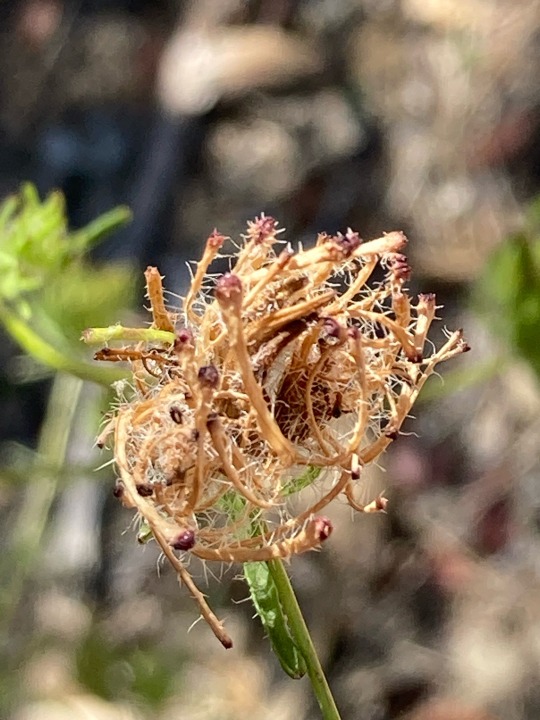

5 notes
·
View notes
Text

Summerwort/ Broomrape (Orobanche caryophyllacea)
Nelkensommerwurz
A parasitic flower living off bedstraw
#mine#herbology#broomrape#orobanche#orobanche caryophyllacea#sommerwurz#nature photography#june 2022
15 notes
·
View notes
Video
n465_w1150 by Biodiversity Heritage Library
Via Flickr:
Nature's garden; an aid to knowledge of our wild flowers and their insect visitors Garden City, N. Y. :Doubleday, Page,1922. biodiversitylibrary.org/page/23671210
#Botany#Flowers#United States#University of California Libraries#bhl:page=23671210#dc:identifier=http://biodiversitylibrary.org/page/23671210#flickr#cardinal flower#Lobelia cardinalis#Castilleja coccinea#scarlet Indian paintbrush#scarlet painted-cup#broomrape
1 note
·
View note
Text
Strigolactones, which occur in about 80% of plant species, are a group of terpenoid lactones (see Figure 15.8H) that were originally discovered as host-derived germination stimulants for root parasitic plants, such as the witchweeds (Striga spp.) and broomrapes (Orobanche and Phelipanche spp.) (Figure 15.15).
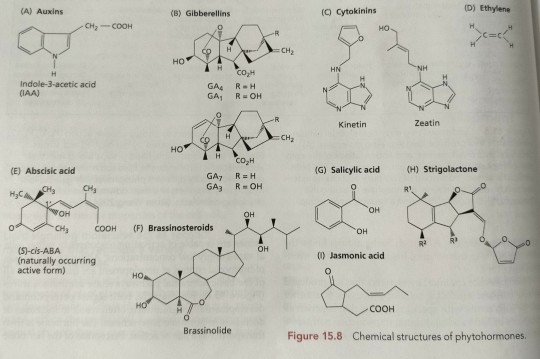

"Plant Physiology and Development" int'l 6e - Taiz, L., Zeiger, E., Møller, I.M., Murphy, A.
#book quotes#plant physiology and development#nonfiction#textbook#strigolactones#terpenoid#lactones#parasitic plants#witchweed#striga#broomrape#orobanche#phelipanche#striga hermonthica#purple witchweed#hormones#plant hormones
0 notes
Text
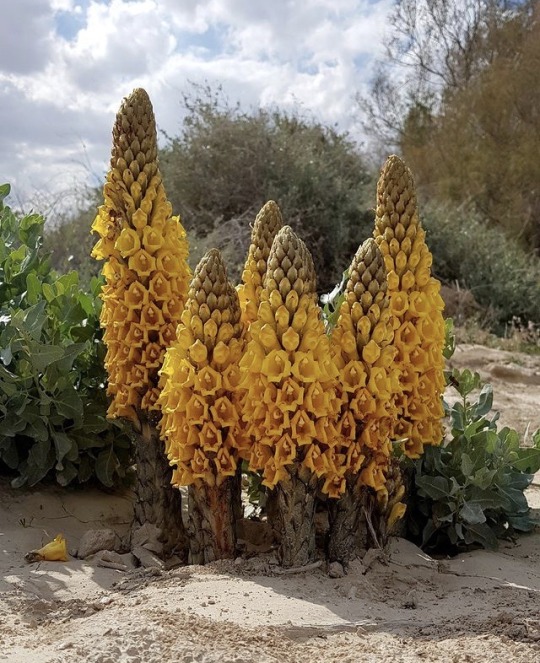
Broomrape aka Cistache tubolosa, a holoparasite
0 notes
Text

Wooly lousewort (Pedicularis lanata) near Nome, Alaska, USA
by Larry Reis
145 notes
·
View notes
Text
Naked Broomrape - A Fascinating Parasitic Plant
Naked broomrape (Aphyllon uniflorum) is a beautiful little plant that is parasitic on sedums, saxifrages, and members of the sunflower family. It is found in southeast Vancouver Island, nearby southern Gulf Islands and parts of southern British Columbia.
British Columbia is home to a number of spectacular broomrapes like naked broomrape (Aphyllon uniflorum). These beautiful parasitic plants are easy to miss because of their size. However, once you know what to look for they can be found regularly. Understanding the connection between the parasite and the host plant is an important factor in locating and identifying different species of broomrape.…

View On WordPress
#Aphyllon uniflorum#British Columbia#Comox Lake Bluffs Ecoreserve#Comox Valley#Naked Broomrape#One-flowered Broomrape#One-flowered Cancer Root#Oregon stonecrop#Orobanche uniflorum#Parasite#Sedum oreganum#Vancouver Island#Wildflowers
7 notes
·
View notes
Text
A summer evening stroll and close encounter with a triffid
NATURE NOTES: Our latest ambling ramble for readers took place last month on what for many would be the familiar territory of Roundshaw Downs.
Yet with expert guidance, we were still able to discover one of nature’s more bizarre plants.
Photographs (unless stated) by ANNABEL SMITH
It had been a while.
In 2022, our loyal reader will recall, we had run a photo diary through the year based around…
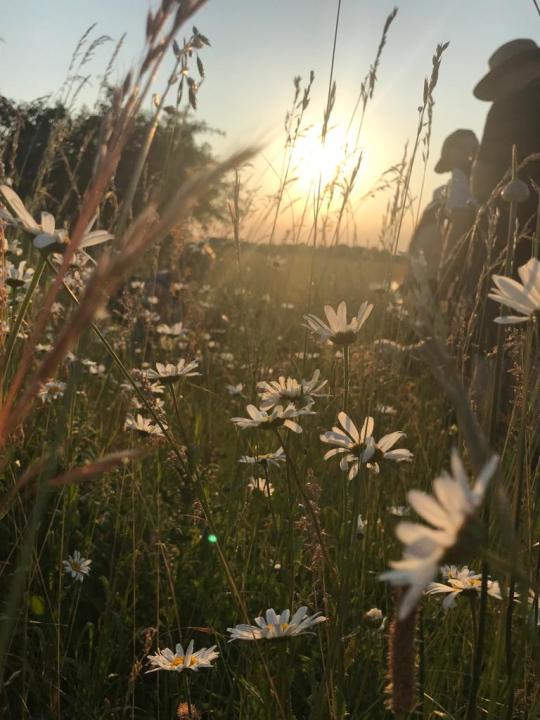
View On WordPress
#Dave Warburton#knapweed broomrape#Roundshaw#Roundshaw Downs#Sutton#Sutton Nature Conservation Volunteers
0 notes
Text

Planet Mars: Astrology, Associations, Healing & Magick
-Talon Abraxas
Mars and Magick
The energy of Mars may be invoked in magical workings dealing with warriors, war or battles, attack or defense, increasing or preserving physical strength, courage, or sexual potency.
It can also be invoked to break binding spells and love spells and to counter or protect against any spells using Venus energy. Mars energy lends itself well to spells to induce lust and passion, but not love and devotion.
Herbs Associated with the Planet Mars
Thorny and/or red plants are often associated with Mars as are those with a strong, spicy flavor and the ability to warm and stimulate or energize the body.
A list of 50+ herbs associated with the planet Mars:
Acacia,
Agapanthus,
Aloes,
All-Heal,
Asafoetida,
Asarabacca,
Ashwagandha,
Barberry,
Basil,
Belladonna,
Betony,
Black cherry,
Black gum,
Blue cohosh,
Broomrape,
Bryony,
Buckbush,
Butterbur,
Butcher’s broom,
Cacti,
Calamus,
Caper,
Cardamom,
Cardoon,
Cassava,
Catnip,
Chicalote,
Chickweed,
Chives,
Coneflower,
Coriander,
Corn salad,
Cow Parsnip,
Cypress,
Dandelion leaf,
Devil’s claw root,
Dragonhead flower,
Dragon tree,
Field horsetail,
Flax lily,
Garlic,
Gentian,
ginger,
Gobo,
Gorse,
Guanique,
Hawthorn,
Holly,
Horseradish,
Hyacinth,
Japanese knotweed,
Kola nut,
Lamium,
Maca,
Madder Root,
Madwoman’s Milk,
Masterwort,
Mistletoe,
Mugwort,
Mullein,
Mustard,
nettles,
Onion,
Pepper,
Pepperwort,
Pennyroyal,
Pigweed,
Radish,
Red cedar,
Red clover,
Red-hot poker,
Reed,
Resurrection lily,
Rowan,
Rue,
Safflower,
Sarsaparilla,
Solandra,
Tea,
Tarragon,
Thistle,
Thyme,
Toadflax,
Tomatillo,
Turmeric,
Wild ginger,
Wild tobacco,
Wormwood,
Yohimbe
Crystals Associated with Mars
Any red stone can be used to represent Mars including ruby and garnet. Bloodstone also contains Mars energy.
Other Correspondences
Mars is associated with Tuesday, and in Romance languages, the word for Tuesday often resembles Mars (in Spanish, Martes, and in French, Mardi). Dante Alighieri associated Mars with the liberal art of arithmetic.
The color red, the-tower tarot card, the sword, and the pentagram are all symbols of Mars.
The horse, the bear, and the wolf are also associated with Mars.
45 notes
·
View notes
Text

Branched Broomrape - Erva-toira-ramosa (Orobanche ramosa)
Cruz Quebrada/Portugal (3/04/2023)
[Nikon D7100; ∑ 18/300mm DC Macro OS HSM with Circular Flash Nissin MF 18; 1/320s; F20; 400 ISO]
4 notes
·
View notes
Text

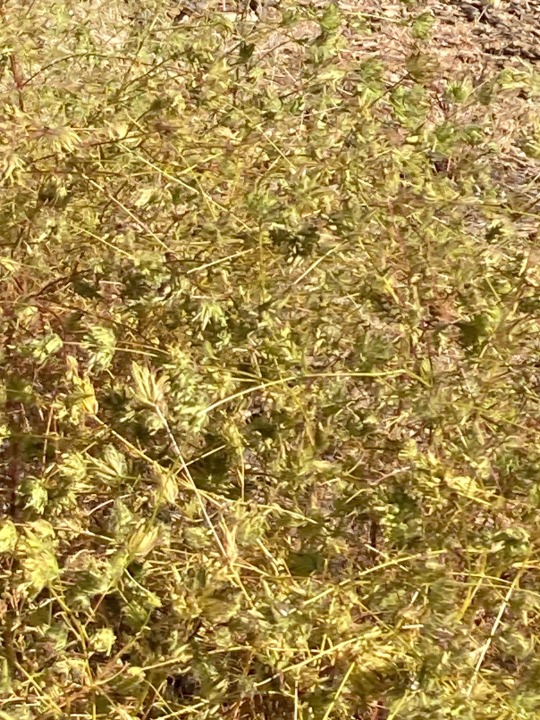
2 notes
·
View notes
Text
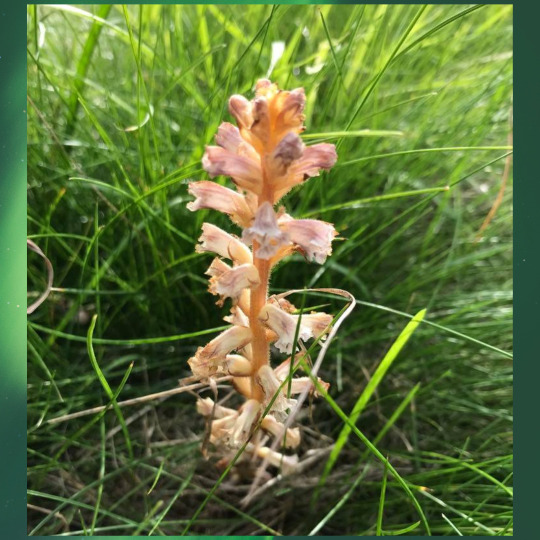
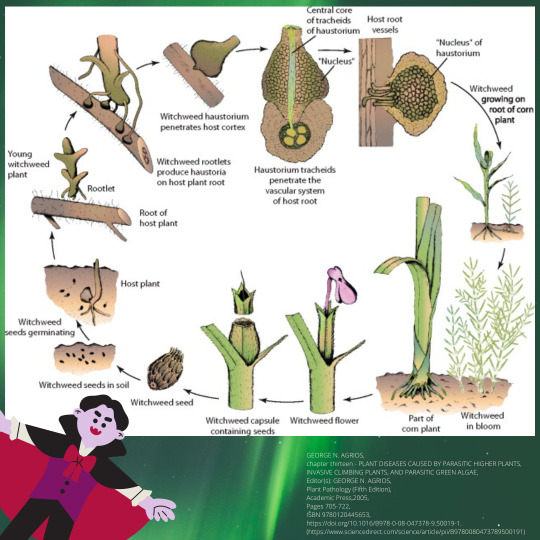
Imagine finding this unusual-looking wildflower in a summer meadow... One might assume, based on its mauve colour and upright growth, that it is a native European orchid. However, the truth is far stranger and more sinister - this odd wildflower is a "vegetable vampire" sucking the vitality from nearby plants!
The Common Broomrape (Orobranche minor) is a species of parasitic plant distributed across Europe. This plant is a "holoparasite", meaning it still has the basic anatomy of a plant (leaves, stems, roots, and flowers) but it lacks the ability to do photosynthesis and thereby generate its own energy for growth and reproduction. Most members of the Orobrancheae plant family are parasites, including the famous Striga genus which is a major pest of economically important crops such as maize and sugarcane in Sub Saharan Africa.
How does the "vampire" find its victims? Broomrape seeds can remain dormant in the soil of meadows, roadsides, and other environments for many years. If a preferred host plant starts growing near the dormant seeds, the seeds sense biological chemicals released by the potential host plants' roots. The Broomrape prefers Fabaceae (Pea family) and Asteraceae (Daisy family) plants. As the parasitic plant germinate and grows, it develops specialised roots called "haustoria" that physically penetrate the hosts' roots and extract nutrients from the host. The "vampire feeding" happens underground, so the Broomrape appears to be another innocent wildflower aboveground.
If you find a Broomrape anywhere in the UK or Europe, don't feel compelled to be a "vampire hunter" and destroy it. Please leave it be! The native European Broomrape is part of the natural ecosystem and it does not harm any crops or garden plants.
#broomrape#orobranche#striga#witchweed#parasitic#parasite#parasiticplant#orobanche#creepyplant#vampire#vampireplant#haustoria#parasitism#plantbiology#plantscience#botany#wildflower#katia_plantscientist
#katia plant scientist#botany#plant biology#plants#plant science#parasite#parasitic plants#parasites#parasitism#weird nature#wildflowers#thief#vampires#vampire#creepy nature#spooky nature#uk nature#plant photography#flowers
9 notes
·
View notes
Text
SpecBio concept #5: Plantworld
A planet resembling Earth in its late Archean state (higher temperature, no free oxygen, dense atmosphere, extensive salty oceans, thick coat of carbon dioxide), perhaps more tectonically stable, extensively seeded with Earth plants and bacteria. Not a single animal or fungal species is brought.
The first green settlers struggle to get a hold on the barren continents, in absence of fungi to erode bare rock and worms to aerate the ground. But some ground is more hospital than other, the first layer of debris provides soil for the survivors, and eventually plant life starts to grow properly.
For many millions of years the plants thrive, thanks to the abundance of carbon and water, the higher temperatures, and the lack of oxygen to interfere with carbon fixation; but eventually oxygen starts piling in the atmosphere, gigatons of carbon are locked into wood and buried debris (to be released in pulses only when wildfires burn out uncontrollably), and the diminished greenhouse effects starts to cool down the planet sensibly. The forests start to shrink.
There’s an obvious niche to be exploited there. Parasite plants without chlorophyll exist on Earth right now, such as the very unfortunately named broomrape. They’ve always thrived on Plantworld in many lineages, with the bounty of hosts to exploit, but now they can do one better: they find out how to secrete acids and enzymes to break apart cellulose, much like fungi did on a forgotten planet, and start consuming the vast dead biomass.
The decomposer plants scatter their pollen and seeds to the wind (no animal disperser to exploit), gliding away on wing-blades like maple seeds, but why stop there? If they gather enough energy, they can manipulate osmotic pressure inside the seeds to move the blades, until they can flap them like wings. This consumes enormous amounts of sugar and oxygen: each plant can afford very few seeds. The strands of turgid cells become analogues of muscles, and soon Planetworld’s forests are abuzz with little flying seeds, flying as far as possible from the mother plant to avoid competing against their own kin.
Each incremental improvement to fitness suggests others. If you sharpen your chemical senses, you could detect the places were there is fewest competition... if you steal back some photosynthetic pigments from your prey (which are but light detectors, after all) you can repurpose them into crude eyes to look for better ground... if you can move your wing-flaps, you can move them on the ground to place yourself in a better germinating position.
Absorbing matter through roots is agonizingly slow for these increasingly energic parasites. It would be much quicker to take food in bulk. The flying seeds secrete powerful saliva-like enzymes to degrade the matter on which they germinate; they use their osmotic muscles to grind shell-plates against each other like tiny jaws; they develop internal specialized glands... And eventually they discard the roots at all, which have lost their use. Why bother growing into a plant form? You can just stay a flying seed all your life, and sprout your flowers directly there. Actually, now that you’re so nimble, you can just seek out your mates directly.
Half a billion year later, Plantworld has a rich biosphere full of animal life; swift-footed grazers and silent ambush predators, swarming minute plankton and giants feeding on them by the millions, industrious hive-builders and devious endoparasites; and perhaps some creature with inquisitive brains and dexterous hands who is in for a big surprise or two when they finally chart the history of life on their world.
EDIT 26-11-23: used to be #4, but then I remembered the actual fourth concept
SpecBio concept #4 (a biosphere feeding on sound, inspired by @cromulentenough)
SpecBio concept #3 (children falling from the “sky”)
SpecBio concept #2 (liquid brain, chemical memory)
SpecBio concept #1 (double silicate biosphere, one hot, one cold)
18 notes
·
View notes
Text
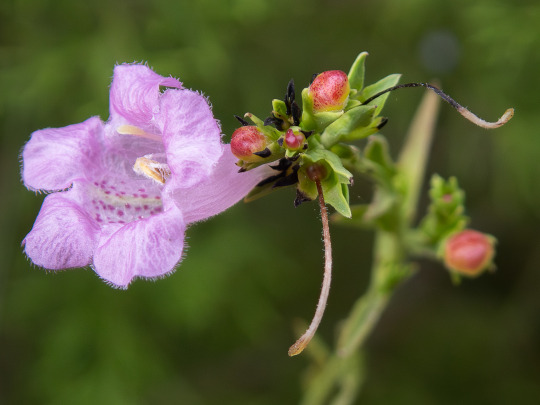
Scientific Name: Agalinis heterophylla
Common Name(s): Prairie false foxglove
Family: Orobanchaceae (broomrape); prev. Scrophulariaceae (figwort)
Life Cycle: Annual
Leaf Retention: N/A
Habit: Forb
USDA L48 Native Status: Native
Location: Collin County, Texas
Season(s): Fall
Flower, flower buds, and developing fruits.
#Agalinis heterophylla#prairie false foxglove#Orobanchaceae#annual#forb#native#Collin County#Texas#fall#autumn#flower#pink#purple#Scrophulariaceae#plantblr
5 notes
·
View notes